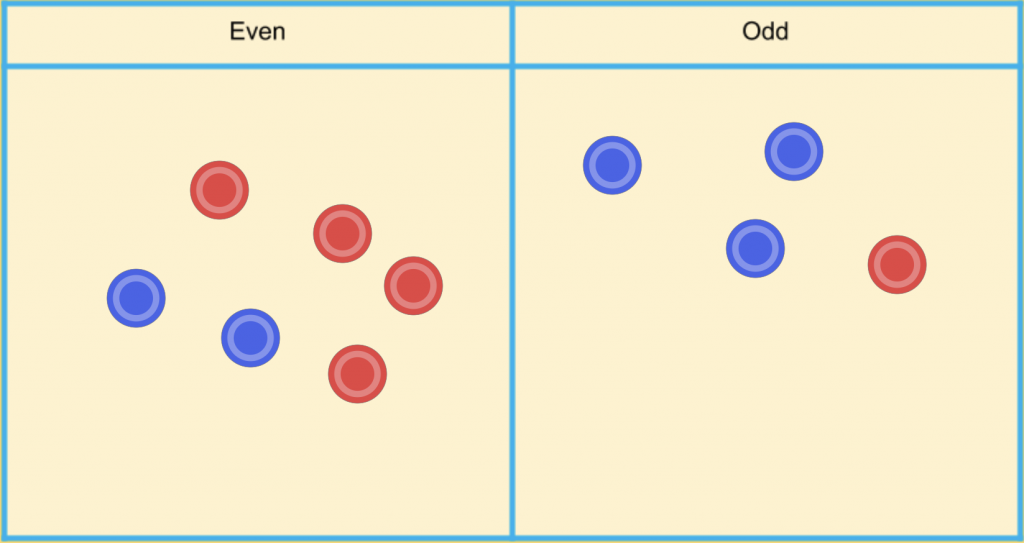Evens and Odds
Junior (Age 9 – 12)
Curriculum Goal
Junior: Number Sense
- Recall and demonstrate multiplication facts for 1 × 1 to 10 × 10, and related division facts.
Context
- Students work in pairs.
- Students should have prior experience multiplying numbers up to six.
- Students should understand the difference between even and odd numbers.
Materials
In-person version
- Table with columns labelled “Even” and “Odd” (Appendix A)
- Coloured playing chips, five chips of one colour per student (Appendix B)
- Two dice or spinners
Online version
- Game file (Playingcards.io upload instructions)
- Video conference capabilities
Lesson
- Each student takes a turn rolling the dice. The highest roll gets to choose their chip colour.
- Taking turns, each student decides which column to place their chips – either the even or odd side of the table. They must place all their chips, but the player’s chips do not need to be evenly distributed. A student may decide to place all chips in one column.
- Each student takes a turn rolling the dice/spinners and calculates the product of the two numbers. (I.e., first role = one, second role = five, product = five)
- If their product is even, the student can remove one of their chips from the even side. If their product is odd, a chip from the odd side can be removed.
- If a student does not have a chip on the side corresponding to the odd or even number they have rolled, they miss the turn.
- The first student to remove all their chips from the board (both even and odd columns) wins the game.

Look Fors
- What strategies do students use when laying their chips in the columns at the beginning of the game? Do they change their strategy in subsequent rounds?
- Are students using different strategies to determine the product of their equations?
Extension
- After the game has been played a few times, have students discuss the probability of getting an even or odd number on each roll. A third student could be responsible for tallying the number of even and odd numbers rolled in a round to determine how close the results are to 50/50.
- Use dice/ spinners with larger numbers.
- Limit the number of chips that can be laid on each side so that if one player puts more in the even column, then the other will be forced to put theirs on odd.
- Add a prime number and squared column. If the student lays chips on those columns and they successfully role a prime number, they can remove twice the number of chips from the board than they put in that column (e.g. if two chips are put in the prime number column and a one and a five is rolled, the player can remove four chips from the board. However, if a prime number isn’t rolled during the entire game, the player may not be able to remove the prime number chip until a prime number is rolled – higher risk, higher reward.) Use the extra chips provided in Appendix B.
Share this lesson
Share on facebook
Share on twitter
Share on email
